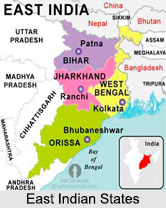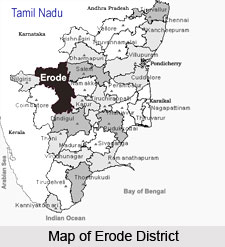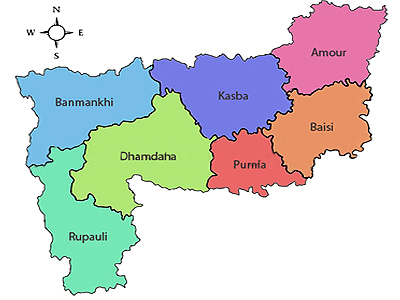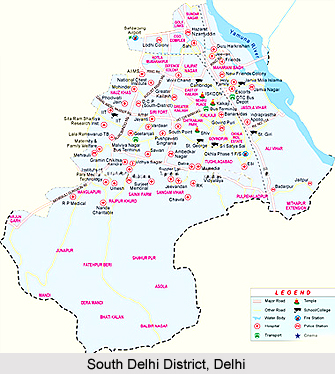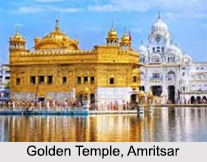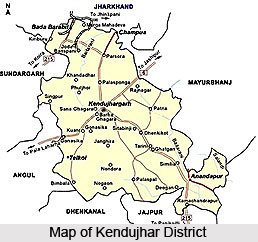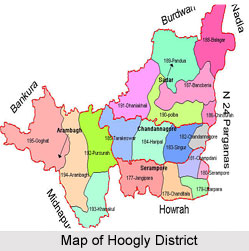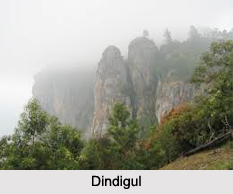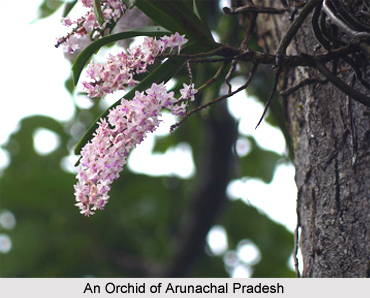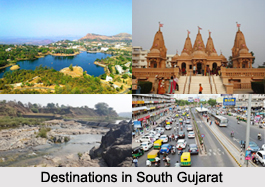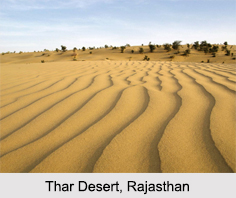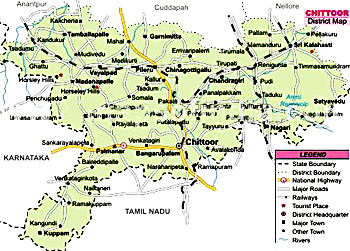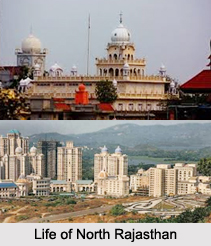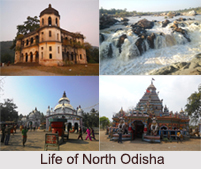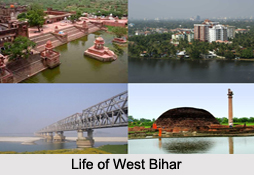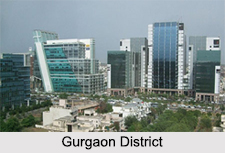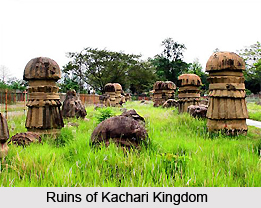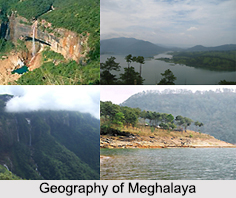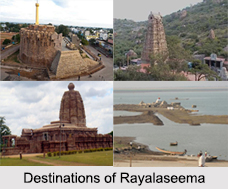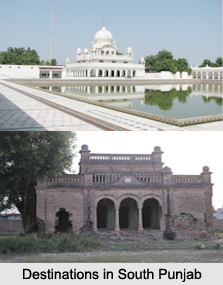Introduction
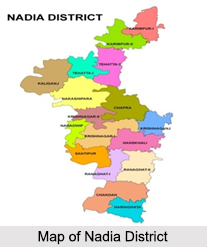 Located in the eastern India, the Nadia District is a district in the state of West Bengal, which borders the country of Bangladesh to the east. The district also borders North 24 Parganas and Hooghly districts to the south, Purba Bardhaman to the west and Murshidabad to the north. Spreading over an area of 3, 927 square km, the Nadia District comprises of 4 sub-divisions- Krishnanagar Sadar, Kalyani, Ranaghat and Tehatta. Each subdivision contains community development blocks which in turn are divided into rural areas and census towns. The Nadia District is an emblem of Vaishnava literature, philosophy and beliefs.
Located in the eastern India, the Nadia District is a district in the state of West Bengal, which borders the country of Bangladesh to the east. The district also borders North 24 Parganas and Hooghly districts to the south, Purba Bardhaman to the west and Murshidabad to the north. Spreading over an area of 3, 927 square km, the Nadia District comprises of 4 sub-divisions- Krishnanagar Sadar, Kalyani, Ranaghat and Tehatta. Each subdivision contains community development blocks which in turn are divided into rural areas and census towns. The Nadia District is an emblem of Vaishnava literature, philosophy and beliefs.
History of Nadia District
The historical significance of Nadia is important for the tourism industry of Nadia. Krishnanagar is associated with profound historical importance as is evident from its name, which follows the name of Raja Krishna Chandra Ray. The Rajbari of Krishna Chandra, with its antique collections of rare kind and the exquisite fabrications around the walls of Rajbari is the principal attraction of the tourists in Krishnanagar, which is the birthplace of famous composer and playwright Dwijendralal Roy. The Protestant and the Roman Catholic Church built during the British imperialism in India are immensely important as a visitor`s spot. The clay model of Ghurni is internationally famous in Krishnanagar. Apart from Krishnanagar, there are other places of interests in the district as well.
Nabadwip, Mayapur, Shantipur are some of the significant tourist places of historical importance in Nadia. One of the Indian schools of logic called the Navya Nyaya system was developed in Nabadwip, which produced great logicians in the 15th century. Nabadwip also used to be an important seat of political power in Bengal under Ballal Sen and later Lakshman Sen, kings of the Sena Empire, who ruled from 1159 to 1206 A.D. But the conquering of the Nabadwip district by Bakhtiyar Khilji, a military general of Qutb al-Din Aibak, paved the way for Muslim rule in Bengal.
Several other spots also are of immense interest scattered all over Nadia. The diversified heritage, which Nadia derives from its past history, has endowed the place with immense wealth that helps the tourism industry to prosper in Nadia. The Nadia district is also known to be the birthplace of Chaitanya Mahaprabhu.
Demographics of Nadia District
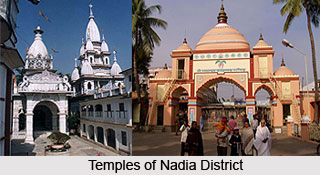 As per the reports of Census India 2011, the total population of the Nadia District is 5, 168,488, out of which the male and female were 2,653,768 and 2,513,832 respectively. The district has a population density of 1,316 inhabitants per square kilometre. The population growth rate of Nadia District over the decade 2001 to 2011 was 12.24 percent. The Nadia District has a sex ratio of 947 females for every 1000 males and the literacy rate of the district is 75.58 percent. The total literate in Nadia District were 3,480,555 of which male and female were 1,878,866 and 1,601,689 respectively. The child sex ratio as per census 2011 was 960 compared to 972 of census 2001. In 2011, children under the ages of 0 to 6 years old formed 10.16 percent of Nadia District compared to 13.17 percent of 2001. The reports also state that, Hinduism is the majority religion of the district followed by 72.15 percent of the total population.
As per the reports of Census India 2011, the total population of the Nadia District is 5, 168,488, out of which the male and female were 2,653,768 and 2,513,832 respectively. The district has a population density of 1,316 inhabitants per square kilometre. The population growth rate of Nadia District over the decade 2001 to 2011 was 12.24 percent. The Nadia District has a sex ratio of 947 females for every 1000 males and the literacy rate of the district is 75.58 percent. The total literate in Nadia District were 3,480,555 of which male and female were 1,878,866 and 1,601,689 respectively. The child sex ratio as per census 2011 was 960 compared to 972 of census 2001. In 2011, children under the ages of 0 to 6 years old formed 10.16 percent of Nadia District compared to 13.17 percent of 2001. The reports also state that, Hinduism is the majority religion of the district followed by 72.15 percent of the total population.
Culture of Nadia District
In the Nadia District, the city of Krishnanagar is renowned for its artists making proportionate human figurines which are famous worldwide. The artists also produce images of Hindu Gods and Goddesses. It is said that initially, it was Raja Krishnachandra who settled a few families of talented clay artists in the Krishnanagar area. Since then the colony has grown and flourished. The place also celebrates Jagadhhatri Puja with great grandeur.
Education in Nadia district
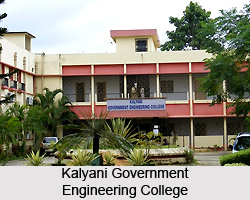 The historical and the cultural district, Nadia was considered to be an educationally backward district. The major section of people being the rural folk were not enlightened enough to come to the schools. Hence the educational scenario in Nadia was far from being comfortable, some decades ago. The poor social- infrastructure hindered the growth of the physical infrastructure like education. However, the Government had come up to fight with illiteracy and ignorance.
The historical and the cultural district, Nadia was considered to be an educationally backward district. The major section of people being the rural folk were not enlightened enough to come to the schools. Hence the educational scenario in Nadia was far from being comfortable, some decades ago. The poor social- infrastructure hindered the growth of the physical infrastructure like education. However, the Government had come up to fight with illiteracy and ignorance.
Presently about 2668 primary schools have been located in 36 circles. With Government intervention maximum of students has come under the school system. However the implementation of the projects and the schemes resulted in the development of the elementary education. Sishu Shiksha Karmasuchi (SSK) was taken up in the year 1999-2000 in 17 blocks of Nadia to provide education to the weaker section. Gram Panchayats have been directed to point out the socially and economically backward blocks and to set up SSK centers in those blocks. Thus Government with his schemes and projects has come forward to initiate educational development in Nadia.
With the proposal of Sarvasiksha Avijan (SSA) in the year 2001, the elementary education has been modified. Under this program it has been planned to provide a quality elemental education to the age group of 6 to 14 by 2010 in Nadia.
With the schemes of Government, educational development is promoted and presently there are 135 higher secondary schools in Nadia, where all the streams of Arts, Science and Commerce are being taught with the facilities of modern education.
The educational scenario has undergone a rapid change with the establishment of Kalyani University, in the core of Kalyani town in Nadia. The University conducted the undergraduate and the postgraduate programs and many vocational training at the same time. A group of Colleges not only in Nadia but also in the adjacent districts are affiliated with the Kalyani University.
However the education in Nadia primarily initiated by the State Government has reached to a comfortable state, but Nadia has long way to go to bring an all round development in the arena of education.
Economy of Nadia
Nadia, being denied of the essential economic resources and effective infrastructure has its economy solely agriculture -based. New alluvium and the plenty of underground water have enhanced agriculture in Nadia. The economic development of Nadia is accentuated by cultivation of seasonal field crops.
Nearly all the important crops have a profitable growth here because the farmers are progressive enough to adopt new technologies and scientific methods to stimulate the agricultural prosperity, thereby inducing the economic developments in Nadia.
About 2,72,135 hectares of land are cultivated, however the conversion of the agricultural lands for the construction of houses recently is hazardous to the economy of Nadia. Since agriculture is the backbone of economy, threat to agriculture would result in economical menace.
The food grain production in the year 1976-77 was 5,13,540 metric tonne. Right from that time Nadia was the largest exporter of food grains to the neighboring districts. In 2000-01, the total production of food grains has been sufficiently increased to 9,42,601. The Government has now become operative to handle the situation. The co- operative market, all been set up by the state government initiate the effective marketing of the surplus production after their proper utilization. A large section of rural population draws their incomes from the agricultural sectors. The food crops thus serve the local economy of Nadia properly. Moreover the export of food crops provides a significant portion of Nadia`s economy.
Vegetable production no less shares an important part in supporting the financial system of Nadia. The vegetable production of 1,20,000 metric tones in the year of 1976-77 has recorded a thriving prosperity because of its demand and presently the total vegetable production is 12,50,182 metric tonne. Unlike the food crops, the vegetables support the fiscal set up of Nadia largely by export.
The partition of Bengal has impeded the jute production in West Bengal. Hence the areas in West Bengal including Nadia, which prospered in jute production has suffered a lot. In the following years when the market of jute goes down, the economic status of Nadia, once an important jute producer was hampered greatly. However with several endeavors put forward by the government to fight out the miserable state of the jute production here. In 2001-02, the jute production was recorded to 17,02,760 bales, which is desirably higher than the other district in West Bengal. Emphasis has been provided to increase the productivity of jute, so that it can be helpful enough to serve the economy of Nadia.
The industries to some extent demand a share in the economic scenario of Nadia. The lack of important minerals and the efficient infrastructure hinders the growth of traditional mineral based heavy industries in Nadia. The agricultural products supplies the staple resources for the industries, hence the agro-based industries earn prominence in Nadia. The food packing and the food processing industries are the principal sectors and involve a large quantity of rural workforce. Agriculture and the food processing industries are almost inseparable because before the marketing of the cultivated products, those are needed to be processed and packed.
Presently with the augmentation of the jute production, several diversified industries centering the jute industries have sprung up. These industries, providing employment to a bulk of local people, prepares the raw jute ready for marketing.
Handloom industries hold a significant position in Nadia. The handloom industry plays the key-role in shaping the socio-economic life of Nadia. The joint venture of the state and the Central Government in the form of financial and the technical assistance accentuate the growth rate of the handloom products. The Shantipuri Tant, Fulia Tant etc are the brand names of the handloom products and extremely in demand in the national market. The weavers now engaged in the value added fabrics, thus penetrated in the global economy also. Consequentially Nadia attain status in the fields of national and international market economy. Moreover the government has oriented several projects like schemes for better training of the weavers, the upgradation of the looms, providing seed capital to stimulate the growth of the handloom industry and thereby the financial standard of economy on a desired stratum.
Apart from these, the other small-scale industries like tarpaulin, film-making, pipes and tubes making and the cabinets for electronic and computer peripherals, alum, color concentrates and the color compound for textile industries have been operating with equal importance in the financial scenario of Nadia.
The agro-based industries though do not participate directly in the export-import transactions, but prepare the agricultural products ready for export and thus engaged in the mainstream economy of Nadia. Moreover these industries serve the local fiscal set up by involving an ample quantity of native workforce.
Eminent Personalities of Nadia District
Eminent personalities of Nadia district include the multiple renowned people, who have excelled in various fields like Bengali literature, theatre, arts and culture, entertainment and so on. The district of Nadia, which is located in the state of West Bengal has produced many such talented people, ever since ancient ages. Krittibas Ojha, Chaitanya Mahaprabhu, Swami Nigamananda, Ramtanu Lahiri and many other personalities are significant contributors to Bengali culture.
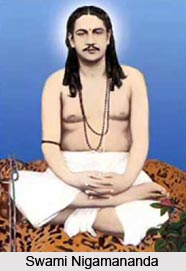 Basudeb Barman
Basudeb Barman
Basudeb Barman is a member of the political party known as the Communist Party of India (Marxist) (CPI (M)) and was a former member of the 14th session of Lok Sabha in the country. He had represented the Mathurapur constituency of the Eastern Indian State of West Bengal. Besides, he was a professor who taught at the University of Calcutta and imparted lessons on Chemical Engineering.
Chaitanya
Also revered as `Gaura` or `Nimai` since he was born under a neem tree, Chaitanya Mahaprabhu was an ardent devotee of Lord Krishna and a social reformer. He propagated the philosophy of Bhakti Yoga and preached about the simple principles of the Vaishnava culture in states like Orissa, Bihar, West Bengal, Jharkhand, Assam and Manipur.
Krittibas Ojha
Krittibas Ojha was a Bengali poet whose creations enriched the Bengali literature in the medieval era. He has been credited for his outstanding work of translation of the Hindu epic Ramayana to the Bengali language. His edition of the Ramayana is also famous as the `Krittivasi Ramayan`.
Jyotirmoyee Sikdar
Jyotirmoyee Sikdar is an Indian athlete who has won victory after running 800 metres at the event of the 1995 Asian Athletics Championships and had also emerged victorious by winning bronze medals in 1500 metre and 800 metre at the time of the 1998 Asian Athletics Championship and gold medals in both these events during the Asian Games in Bangkok in the year 1998. She served as the Member of Parliament in the nation and represented the constituency of Krishnanagar in the 14th session of the Lok Sabha.
Ramtanu Lahiri
Ramtanu Lahiri was a famous Bengali teacher and a social reformer who was also associated with the Young Bengal Movement. He was respected since he was a great educator and an important contributor in the sphere of education, particularly in Eastern India.
Azizul Haque
Also known as Khan Bahadur Qazi Azizul Huq or Quazi Syed Azizul Haque, Azizul Haque was famous for developing a unique system of fingerprints, known as the Henry Classification System of fingerprints. He worked as a police officer for the British Raj when India was being governed by the British Raj.
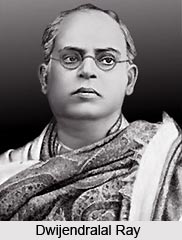 Raghunatha Siromani
Raghunatha Siromani
Raghunatha Siromani was born in the region of Nabadwip, which constitutes the present-day district of Nadia. He was a great philosopher and the grandson of Sulapani, who was a reputable writer in the 14th century C.E. He was also a gifted logician and a talented exponent of metaphysics.
Swami Nigamananda
Swami Nigamananda had founded the Saraswat Math in the area of Jorhat in the state of Assam and Nilachal Saraswati Sangha in Orissa. He was another distinguished personality who was born in Nadia in 1879. Nigamananda is believed to have been one of the India`s greatest spiritual leaders.
Dwijendra lal Ray
Dwijendralal Ray, also known as D.L.Ray, was a Bengali musician, playwright and poet of exceptional repute. He is well-known for his songs which are referred to as `Dwijendrageeti`, as well as his plays, which are mostly historical and also mythological. His songs `Dhana Dhanya Pushpa Bhara` and `Banga Amar Janani Amar` are immensely cherished even today.
Other celebrated personalities of Nadia district involve Sri Advaita Acharya, Jatindranath Sengupta, Krittibas Ojha, Madan Mohan Tarkalankar, Mohammed Mozammel Haque and numerable others. Raakhee Gulzar, born as Rakhee Majumdar, who is a renowned film star of Bollywood (Hindi film industry), also belongs to Nadia district.
Tourism of Nadia District
Tourism in Nadia District is famous for its historical and religious significance. The district houses a number of temples and shrines which forms popular pilgrimage sites. Some of the places are also famed as the birth place of eminent personalities. Excavations have also been done in several sites of Nadia District that have revealed remains of ancient monuments.
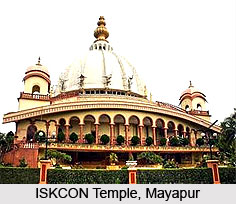 Nabadwip
Nabadwip
Nabadwip is located on the western bank of Bhagirathi River. The place is associated with the arrival of Vaishnab religion in West Bengal and the birth of Lord Sri Chaitanya. Sri Chaitanya was a renowned social reformer of 16th Century as well as a religious leader of Vaishnabism and Bhakti cult. Nabadwip was once the capital of the ruler of Sena dynasty, Lakshman Sena, from 1179 to 1203. Nabadwip houses a number of temples and pilgrimage sites. Dwadas Shib Mandir which was constructed in 1835 is one of the most popular temples and exhibits enchanting floral designs.
Mayapur
Mayapur is located across the Bhagirathi River, just opposite to Nabadwip. It is also believed as the birth place of Lord Sri Chaitanya by some schools of thought. Important temples of the region include Saraswat Adwaita Math, ISKCON temple of A. C. Bhaktivedanta and Chaitanya Gaudiya Math.
Shantipur
Shantipur is situated in the Ranaghat Sub-division of Nadia district. It is considered as the centre of Sanskrit literature and learning, Vedic texts a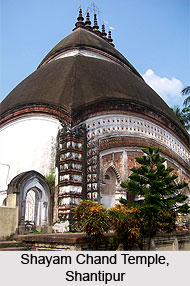 nd scriptures since ancient time of ninth century. Topkhana Mosque is one of the major attractions of the place that was built by Fauzder Gazi Mohammad Yaar Khan during the rule of Aurangzeb, Mughal Emperor. Other significant sites of Shantipur are Shayam Chand Temple, exhibiting traditional `Aatchala` style; Jaleswar Temple with intricate terracotta designs and Adwaita Prabhu Temple. Taant Sari of this region is widely acclaimed throughout the India. Shantipur is also famous for being the birth place of Poet Krittibas, the composer of Bangali Ramayana.
nd scriptures since ancient time of ninth century. Topkhana Mosque is one of the major attractions of the place that was built by Fauzder Gazi Mohammad Yaar Khan during the rule of Aurangzeb, Mughal Emperor. Other significant sites of Shantipur are Shayam Chand Temple, exhibiting traditional `Aatchala` style; Jaleswar Temple with intricate terracotta designs and Adwaita Prabhu Temple. Taant Sari of this region is widely acclaimed throughout the India. Shantipur is also famous for being the birth place of Poet Krittibas, the composer of Bangali Ramayana.
Palashi (Plassey)
Palashi is historically significant for the Battle of Plassey which was fought here in 1757. The battle marked the initiation of British Empire in India. The place also houses a memorial stone, marking the victory of British, which was erected in the year 1883.
Ballal Dhipi
Ballal Dhipi is situated near Bamanpukur Bazar. Excavations by the Archaeological Survey of India were started here in the year 1980. Excavations furnished structural complex exhibiting a unique style and spanning a large area around a high mound (Dhipi).
Shivaniwas
Shivaniwas is another pilgrimage site situated in Krishnaganj Block of the district. The capital of Raja Krishna Chandra Rai was once temporarily shifted to Shivaniwas from Krishnanagar owing to the threat of attack by the Marathi raiders and Bargis. Raj Rajeswar Temple is a famous temple of this region built in 1754, which was named after Lord Shiva. The temple houses a Shivalinga which is considered to be the largest in Asia. Ram-Sita temple and Ragniswar temple were constructed in 1762, forming a composite structure. It is locally called Buro-Shib Mandir and represents a Gothic style of architecture.
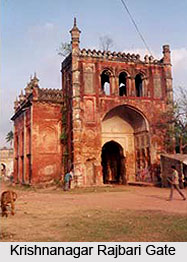 Krishnanagar
Krishnanagar
Krishnanagar is located along the bank of Jalangi River. The place is named after Raja Krishna Chandra Rai who has built the Rajbari which serve as a significant tourist attraction. The place is also famed as the birth place of Sri Dwijendra Lal Roy who was a prominent poet, composer and playwright and had substantial contribution in the Bengali Literature. Krishnanagar also hosts a Protestant Church, established in 1840 and a Roman Catholic Cathedral built in 1898. Clay models of Krishnanagar are very famous and are centred at Ghurni. The artisans of this region have acquired huge acclamation around the globe for their exquisite craftsmanship.
Bethuadahari
Bethuadahari is a forest area and an extended deer park. It was established in the year 1980 with the aim of preserving the bio-diversity of the central Gangetic alluvial zone. Common species found in the forest are Python, Porcupine, Jungle Cat, Snake, Monitor Lizard and a huge variety of birds.
Archeological Tourism in Nadia
Nadia also hosts a number of age old monuments and temples which serve as famous tourist spots. Raghbeswar Temple, Dignagar; Shyamchand Temple, Shantipur; Palpara Temple, Palpara; Bamanpukur Mound of Fort, Bamanpukur; Bramha Samaj , Santipur; Adwaitaprabhu Mandir, Santipur and Topkhana Mosjid, Shantipur are some of the significant archaeological assets of the district.
Pilgrimage Tourism in Nadia District
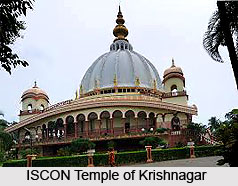 Pilgrimage tourism in Nadia district will involve visiting the various temples located here. Most of these temples have been constricted in ancient times, and apart from their religious significance they also hold immense historical worth. The most important places of pilgrimage tourism in Nadia district are discussed below.
Pilgrimage tourism in Nadia district will involve visiting the various temples located here. Most of these temples have been constricted in ancient times, and apart from their religious significance they also hold immense historical worth. The most important places of pilgrimage tourism in Nadia district are discussed below.
Nabadwip
Nabadwip lies on the western side of the Bhagirathi River at a distance of about 20 Kms from Krishnanagar and it is associated with the birth of Lord Sri Chaitanya and the advent of the Vaishnava religion in Bengal. Sri Chaitanya was not only a religious leader preaching Vaishnab ideas and Bhakti cult but also a social reformer in the 16th Century. Nabadwip was the capital of Lakshman Sena, the famous ruler of the Sena dynasty, who ruled from 1179 to 1203. There are a number of temples and pilgrimage centres located here. Dwadas Shib Mandir built in 1835 with the exquisite floral designs attracts a large number of pilgrims. The images and idols of Lord Sri Chaitanaya in a few other places are also regarded with reverence. For accommodation, a number of guest houses, private hotels, boarding houses are available.
Mayapur
Mayapur is situated on the opposite Nabadwip across the river Bhagirathi. Some Schools of thought claim this place to be the actual birth place of Lord Sri Chaitanya. The ISKCON temple of A.C.Bhaktivedanta, the Saraswat Adwaita Math and the Chaitanya Gaudiya Math are the important temples at Mayapur. During Holi (dol) festival Rashyatra Mayapur presents itself as a centre of harmony, amity, fraternity and festivity.
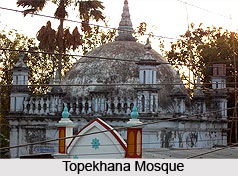 Shantipur
Shantipur
Shantipur was for long the seat of Sanskrit learning and literature, Vedic texts and scriptures. It is located in the Ranaghat Sub-division of the district and is about 18 Kms away from Krishnagar. The Topkhana Mosque was built by Fauzder Gazi Mohammad Yaar Khan in 1703 - 1704 during the reign of Mughal Emperor Aurangzeb. This mosque consists of a big dome and eight minars. The Shayam Chand Temple built in traditional `Aatchala` manner, the Jaleswar Temple with its exquisite terracotta designs and the Adwaita Prabhu Temple are the noteworthy temples of Shantipur. The weavers of Shantipur have made themselves famous throughout India by their professional aptitude in making "Tant Saree." Fulia a township very close to Shantipur, is the birth place of Poet Krittibas, composer of Bangla Ramayan.
Shivaniwas
Shivaniwas is located within Krishnaganj Block in the Sadar Sub-Division and is about 26 Kms away from Krishnanagar. Predicting an attack from the Bargis and Marathi raiders, Raja Krishna Chandra Rai (1728 - 1782) temporarily shifted his capital from Krishnanagar to this place. The Raj Rajeswar Temple, named after Lord Shiva, was built by him in 1754. The Shivalinga enshrined in this temple is said to be the largest in Asia. The Ragniswar temple and the Ram-Sita temple built in 1762 form a composite structure alongside Raj Rajeswari Temple, locally known as Buro-Shib Mandir. The architecture of this temple bears Gothic influence.
Leisure Tourism in Nadia District
Leisure tourism in Nadia district is like a walk down the roads of modern history of India. There are a number of places of historical significance that are located in the historical worth. The various places of leisure tourism in Nadia district are discussed below.
Plassey
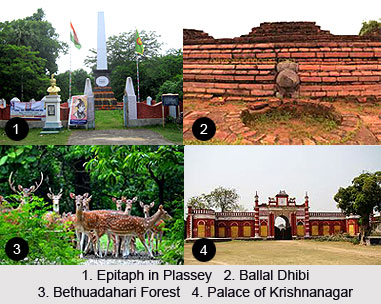 Among historical places, Palashi (Plassey) is of prime interest. Located at a distance of about 50 Km from Krishnanagar, this is the site where the famous Battle of Plassey was fought on 23rd June, 1757 between the last independent ruler of Bengal, Nawab Siraj Ud Daula (1756-1757) and the British forces under the command of Lord Robert Clive. This was a most decisive battle as it marked the advent of the British rule in erstwhile Bengal and in India as a whole. A memorial stone to mark the victory of the British was erected here in 1883. This structure, built sometime during the later period of Lord Curzon`s administration, stands tall even to this day.
Among historical places, Palashi (Plassey) is of prime interest. Located at a distance of about 50 Km from Krishnanagar, this is the site where the famous Battle of Plassey was fought on 23rd June, 1757 between the last independent ruler of Bengal, Nawab Siraj Ud Daula (1756-1757) and the British forces under the command of Lord Robert Clive. This was a most decisive battle as it marked the advent of the British rule in erstwhile Bengal and in India as a whole. A memorial stone to mark the victory of the British was erected here in 1883. This structure, built sometime during the later period of Lord Curzon`s administration, stands tall even to this day.
Ballal Dhipi
Ballal Dhipi is located near Bamanpukur Bazar on the way to Mayapur. It is situated at a distance of about 25 Kms from Krishnanagar. The excavation work was started here by the Archaeological Survey of India in the early 1980s. It revealed a unique structural complex covering nearly 13,000 Sq. meters All of this is centred around a mound (Dhipi) having a height of 9 metres. This complex identifies itself with the Vikramsila Vihar. Experts say that this side of Stupa (Vihar) of eighth or ninth century was perhaps a seat of learning and pilgrimage up to the eleventh century.
Krishnanagar
Krishnanagar is the district headquarters situated on the bank of Jalangi River. Krishnanagar is named after Raja Krishna Chandra Rai (1728 - 1782). The Rajbari built here during the reign of Raja Krishna Chandra Rai is a prominent place of tourist attraction though the remnants of past glory have been eroded away and only a dilapidated structure of the exquisite places with carving on its inner walls exists today. Krishnanagar was the birth place of the noted poet, composer and playwright Shri. Dwijendra Lal Roy (1863 - 1913), whose contribution to Bengali Literature has been immense. The Christian Missionaries attached much importance to Krishnanagar. The Protestant Church was built here during 1840s. The Roman Catholic Cathedral was built in 1898. The origin of the famous clay models of Krishnanagar is at Ghurni. The clay model artists of Ghurni have won international repute and fame for their excellence in clay modelling.
Bethuadahari Forest
A forest covering about 67 hectares is located at Bethuadahari which is situated at a distance of about 22 kilometres from Krishnanagar. This forest is actually an extended Deer Park. The forest was established in 1980 to preserve the bio-diversity of the central Gangetic alluvial zone. A census of 1998 reveals a population of 295 deer in this forest. Other wildlife in the region includes python, jungle cat, porcupine, monitor lizard, snakes and a variety of birds.
Visiting Information on Nadia District
The railhead of the Nadia District is known as the Nabadwip Ghat station and the closest airport is the Netaji Subhash Chandra Bose International Airport, which is about 110 km away from the district.
